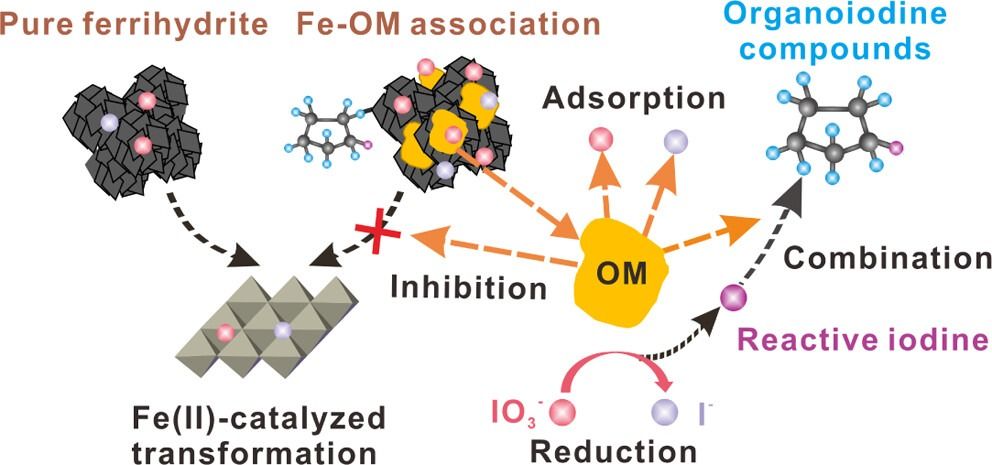Title: Hidden Role of Organic Matter in the Immobilization and Transformation of Iodine on Fe-OM Associations
Source: Environmental Science & Technology
Authors: Jiangkai Xue,Yamin Deng, Qing-long Fu,Yuxiao Xu, Jianbo Shi, and Yanxin Wang
Published: March 22, 2024
Link: https://doi.org/10.1021/acs.est.4c01135
Abstract:
The biogeochemical processes of iodine are typically coupled with organic matter (OM) and the dynamic transformation of iron (Fe) minerals in aquifer systems, which are further regulated by the association of OM with Fe minerals. However, the roles of OM in the mobility of iodine on Fe-OM associations remain poorly understood. Based on batch adsorption experiments and subsequent solid-phase characterization, we delved into the immobilization and transformation of iodate and iodide on Fe-OM associations with different C/Fe ratios under anaerobic conditions. The results indicated that the Fe-OM associations with a higher C/Fe ratio (=1) exhibited greater capacity for immobilizing iodine (∼60–80% for iodate), which was attributed to the higher affinity of iodine to OM and the significantly decreased extent of Fe(II)-catalyzed transformation caused by associated OM. The organic compounds abundant in oxygen with high unsaturation were more preferentially associated with ferrihydrite than those with poor oxygen and low unsaturation; thus, the associated OM was capable of binding with 28.1–45.4% of reactive iodine. At comparable C/Fe ratios, the mobilization of iodine and aromatic organic compounds was more susceptible in the adsorption complexes compared to the coprecipitates. These new findings contribute to a deeper understanding of iodine cycling that is controlled by Fe-OM associations in anaerobic environments.
